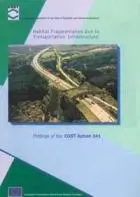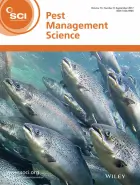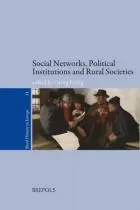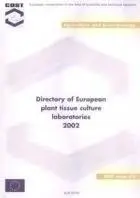
Electronic Traffc Aids on Major Roads - Final Report Detection of Weather Conditions Theme 2

Coccidiosis in Pigs

Habitat Fragmention due to Transportation Infrastructure - Findings of the COST Action 341

Indoor Air Pollution by Formaldehyde in European Countries

Media literacy: Ambitions, policies and measures
- Author(s): Livingstone S.
- Download PDF
European scholars and policy stakeholders are concerned that, in an ever-more complex digital media ecology, the demands on audiences to become media literate are growing. While stakeholders work to develop new initiatives, academic research is vital both to inform and critique. Entitled “Media literacy: Ambitions, policies and measures” and edited by Sonia Livingstone, this report brings together experts from different perspectives to generate a timely account of media literacy in Europe.

Induced plant defences in biological control of arthropod pests: a double?edged sword
- Author(s): Maria L Pappas Colette Broekgaarden George D Broufas Merijn R Kant Gerben J Messelink Anke Steppuhn Felix Wäckers Nicole M van Dam
- Publisher(s): Wiley Online Library
- https://www.ncbi.nlm.nih.gov/pubmed/28387028
Biological control is an important ecosystem service delivered by natural enemies. Together with breeding for plant defence, it constitutes one of the most promising alternatives to pesticides for controlling herbivores in sustainable crop production. Especially induced plant defences may be promising targets in plant breeding for resistance against arthropod pests. Because they are activated upon herbivore damage, costs are only incurred when defence is needed. Moreover, they can be more specific than constitutive defences. Nevertheless, inducible defence traits that are harming plant pest organisms may interfere with biological control agents, such as predators and parasitoids. Despite the vast fundamental knowledge on plant defence mechanisms and their effects on natural enemies, our understanding of the feasibility of combining biological control with induced plant defence in practice is relatively poor. In this review, we focus on arthropod pest control and present the most important features of biological control with natural enemies and of induced plant defence. Furthermore, we show potential synergies and conflicts among them and, finally, identify gaps and list opportunities for their combined use in crop protection. We suggest that breeders should focus on inducible resistance traits that are compatible with the natural enemies of arthropod pests, specifically traits that help communities of natural enemies to build up.

Small Arms, Crime and Conflict - Global Governance and the threat of armed violence
- Author(s): O. Greene and N. March (Eds)
- Publisher(s): Routledge
- http://www.routledge.com/books/details/9780415567008/
- ISBN/ISSN: 978-0-415-57755-7
This book focuses on the use of small arms in violence and attempts by the state to govern the use and acquisition of these weapons.
It is likely that hundreds of thousands of people are killed every year as a result of armed violence – in contexts ranging from war zones to domestic violence. This edited volume examines why these deaths occur, the role of guns and other weapons, and how governance can be used to reduce and prevent those deaths. Drawing on a variety of disciplines, ranging from anthropology through economics to peace and security studies, the book’s main concern throughout is that of human security – the causes and means of prevention of armed violence.
The first part of the book concerns warfare, the second armed violence and crime, and the last governance of arms and their (mis)-use. The concluding chapter builds on the contributors’ key findings and suggests priorities for future research, with the aim of forming a coherent narrative which examines what we know, why armed violence occurs, and what can be done to reduce it.
This book will be of much interest to students of small arms, security studies, global governance, peace and conflict studies, and IR.



Social Networks, Political Institutions and Rural Societies
This book is a collection of essays on social networks, social capital, and kinship in historical and contemporary rural societies. They span a wide range of European countries and historical situations, from early modern Flanders and Italy to present-day Austria and Armenia. All the essays describe in detail how people on the countryside connected with one another in formal or informal relations. In doing so, the authors use and critically discuss methods of historical interpretation, social network analysis, and econometrics.